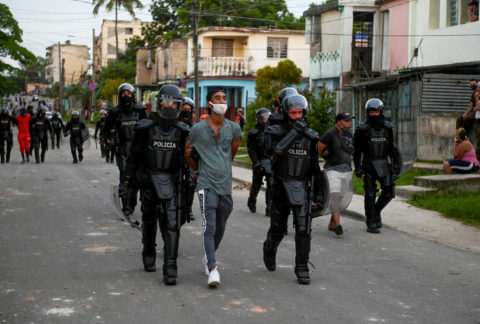The Cuban regime is going through its worst crisis since the 1990s, when it lost all its subsidies from the Soviet Union after the demise of the superpower.
With a growth forecast of 2 percent in 2021, versus an 11 percent contraction in 2020, according to the Cuban Ministry of Economy, the government is facing a decline in its main sources of income: remittances, tourism, and the export of medical professionals.
“The Miguel Díaz-Canel government is going through a perfect storm,” said Emilio Morales, head of The Havana Consulting Group, a Miami-based consulting firm that studies the Cuban economy.

“The lack of revenue from tourism, due to the pandemic, was coupled with the consequences of tougher measures by the administration of President Donald Trump to prevent the military from appropriating remittances, as well as the already dwindling income from the export of medical services,” he said.
Tourism is going from bad to worse, says Cuban economist Pedro Monreal, who worked at the Center for International Economic Research at the University of Havana and is now the author of a popular blog about the Cuban economy. In the first half of 2021, the island received only 141,316 visitors, or 845,357 fewer than in the same period of the previous year, according to data published by Cuba’s National Statistics and Information Office.
The economic crisis manifests itself in long lines — in a country already ravaged by COVID-19 — to buy necessities. Blackouts in major cities are common and a broken health care system exists due to the lack of investment, experts said.
The crisis was also largely responsible for the biggest protests that have taken place on the island in 60 years, when, in July 2021, tens of thousands of Cubans took to the streets in various cities of the country, demanding freedom and respect for human rights.
The transfer of remittances has also plummeted.
“The transfer of remittances from the United States, one of the main aspects of the Cuban economy, fell 70 percent in 2021, compared to the previous year, when it was nearly $2.348 billion,” Morales said.
Economist Carmelo Mesa-Lago, professor emeritus at the University of Pittsburgh, said that the Cuban economic crisis is “structural.”
“Cuba maintains an inefficient economic system of centralized planning and a vast predominance of state ownership of production means over the market, a model that has failed throughout the world,” the scholar said.
In addition, Cuba’s economic relationship with its main partner and benefactor, the Nicolás Maduro regime, has decreased drastically, the expert said. During the economic boom years under Hugo Chávez, Venezuela took in most of the labor that Cuba exported, in exchange for subsidized oil and invested directly in projects of the island’s regime.
“The Cuban economy is also incapable of financing imports with its own exports, making it unsustainable. The total value of Cuban exports contracted 67 percent over 1989-2020, while imports increased and so did the merchandise deficit,” Mesa-Lago added.
Another key element in the Cuban crisis is a reform package implemented in January 2021, known in Cuba as “Ordering Task” (Tarea Ordenamiento), which eliminated a currency known as the convertible peso, which had parity with the dollar, and raised wages, pensions, and the prices of most products.
Pavel Vidal, a Cuban economist and associate professor of Economics at Colombia’s Pontificada Universidad Javeriana Cali, and Mesa-Lago estimate that inflation stemming from the elimination of the convertible peso and the increase in prices, pensions, and salaries exceeds 500 percent. For his part, Mesa-Lago said that Cuban workers’ purchasing power plummeted by 47 percent compared to 1989, the last year of Soviet subsidies.
In an economic analysis published in mid-October in the international news agency Inter Press Service, Vidal, a former employee of Cuba’s Central Bank, said that questions about whether Cuba was “heading for a new special period” had moved to the back burner.
“In economic terms, they are seeing a combination, as in the 1990s, of a collapse in the gross domestic product, a balance of payments crisis, depletion of international reserves, defaults on international debt, two/three-digit inflation, significant depreciation of the national currency in informal markets, and excessive fiscal deficits,” he said.









